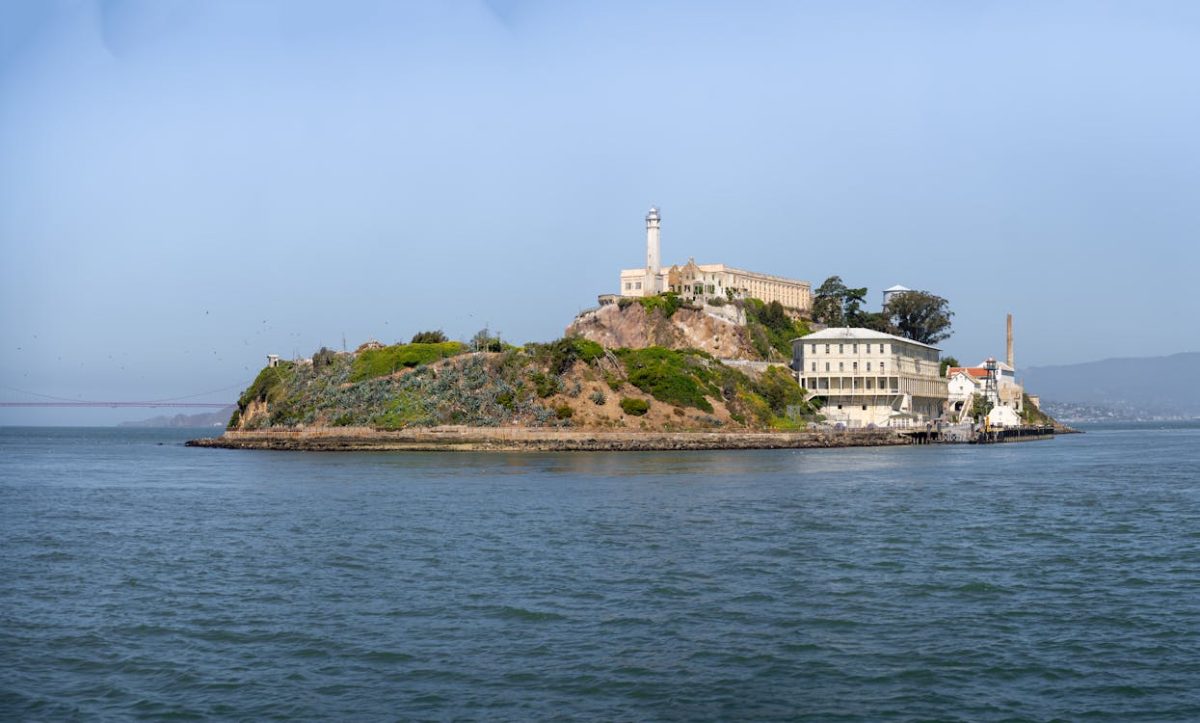Donald Trump declared that he wants to turn Alcatraz Island back into a functioning prison. Alcatraz is a famous landmark in San Francisco Bay, best known for its history as a federal prison. It’s currently managed by the National Park Service, where people are free to explore its history and the stories of the prisoners who once lived there. The landmark is cherished by locals and visitors alike. A look at the evolution of the island will help to consider the forces that continue to shape it.
In 1775, European explorer Juan Manuel de Ayala sailed to San Francisco and named the island Alcatraces, which over time, turned to Alcatraz. In the 1850s, the U.S. Army built a citadel with over 100 cannons to protect the bay entrance of San Francisco. Later on, military prisoners were held on the island. In 1909, the military prison was torn down, and the Pacific Branch, U.S. Disciplinary Barracks for the U.S. Army was established. The prison got its nickname, “The Rock,” due to the rocky terrain surrounding it.
In 1933, the ownership of the island switched from the U.S. Army to the U.S. Department of Justice. During the nearly 30 years that it was a federal prison, many famous inmates were held there, including gangsters Al Capone and “Machine Gun” Kelly. This inspired a pop culture surge of Alcatraz movies and TV shows.
In 1963, it closed because the cost per inmate became very expensive, and it would cost 3-5 million dollars to repair all of the structural issues. The government thought it would be more cost-effective to build a new prison elsewhere, rather than continuing to pay for Alcatraz. The fact that it also only had a holding capacity of 336 people made it even more questionable.
The prison remained abandoned until 1969, when a group of Native American activists tried to claim the land to protest the treatment of Native Americans and turn it into a cultural center or educational complex. For 18 months, thousands of people went to protest, including Native Americans, celebrities, school kids and the general public. The protest connected many young Native American activists from dozens of tribes. A water tower on the island was vandalized with graffiti about the protest. It reads “Peace and Freedom. Welcome. Home of the Free Indian Land.” In 2012, the National Park honored this part of Alcatraz’s history by painting back over the letters. They invited the descendants of the original Native American protesters to participate in painting the message.

Towards the end of the occupation, the Native American leaders were finding it difficult to continue the protest due to damage to the property, drug use and lack of resources. In 1971, Federal Marshals removed these Native Americans from Alcatraz.
In 1972, the Golden Gate National Recreation Area was created, and Alcatraz became incorporated with it. It opened to the public and is now known as a tourist sight and a beloved place for locals. The island draws in about 1.5 million visitors and generates 60 million dollars per year in tourism. This is the history of Alcatraz, but what could be the future?
On May 4th, 2025, current president Donald Trump announced that he wants to turn Alcatraz back into a federal prison.
“We need law and authority in the country. So, we’re going to look at it. Some of the people up here are going to be working very hard on that,” said Trump.
Trump’s statement caused a lot of confusion, and many people started talking about whether this could be the future for Alcatraz. There are broken toilets, no running water, no sewage system, and some of the exterior walls are being reinforced with netting so they don’t fall in, leading many to think there is little promise that this plan will ever be followed through with. San Francisco is at risk of losing up to 1 billion in budget next year, due to rising costs, a shrinking population, and reduced government funding, so closing down tours through Alcatraz would be a bad idea considering how valuable it is to their economy.

When asked if she believes Alcatraz will become a federal prison, Vivian Kirby, an Athens Drive student, had a fair point.
“I feel like it probably will, I mean, if the president wants it to, because to my knowledge it’s not under any federal protection,” said Kirby.
Another Athens Drive student, Amani Farrow, had an alternate view.
“I don’t think Alcatraz will end up being turned into a prison. We already have tons of prisons worldwide, and I don’t feel like Alcatraz needs to be another one,” said Farrow.
It’s unlikely that Alcatraz will ever reopen as a federal prison, but its history is still significant. It’s a symbol of America’s past, and its legacy will remain an important part of the nation’s history.







